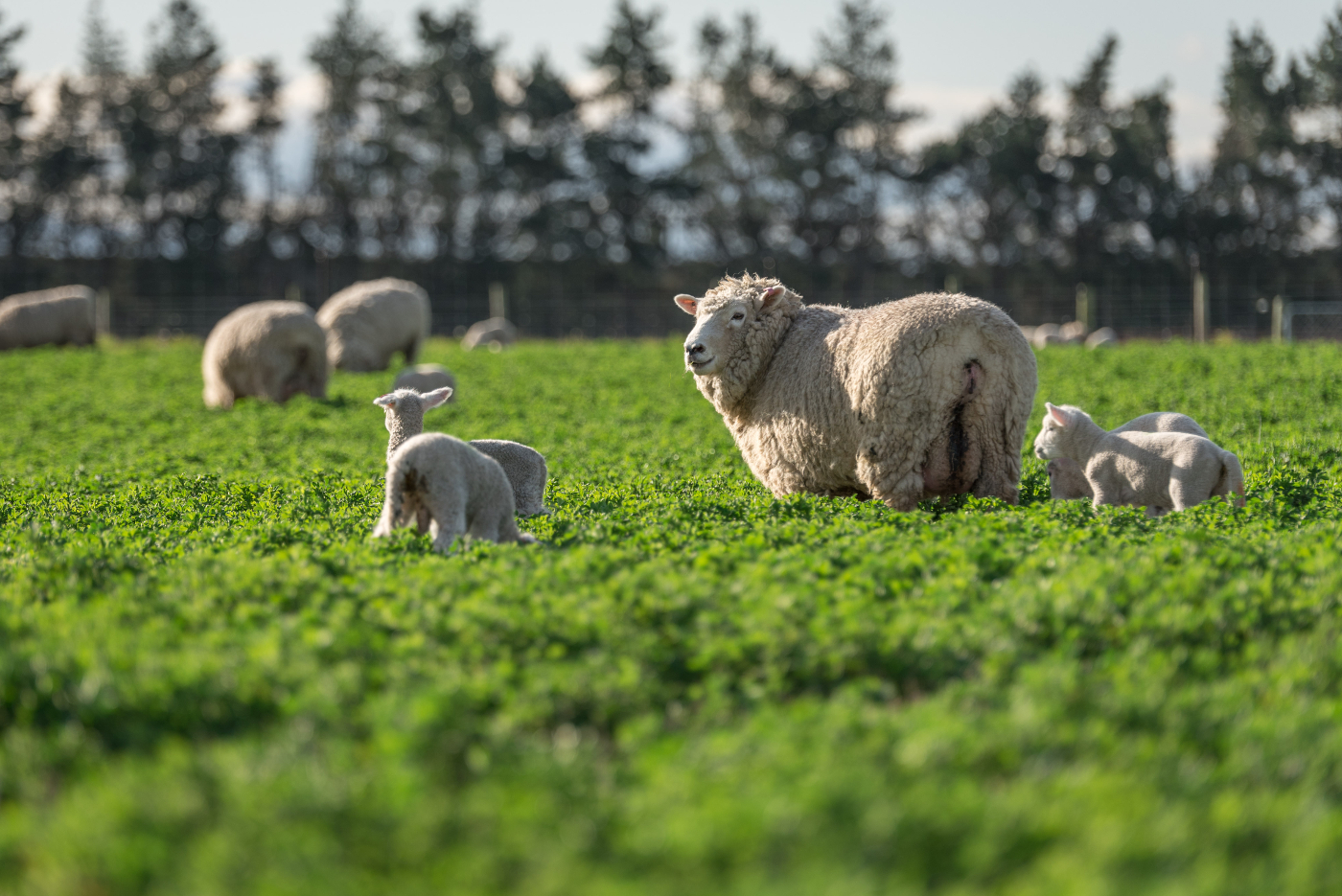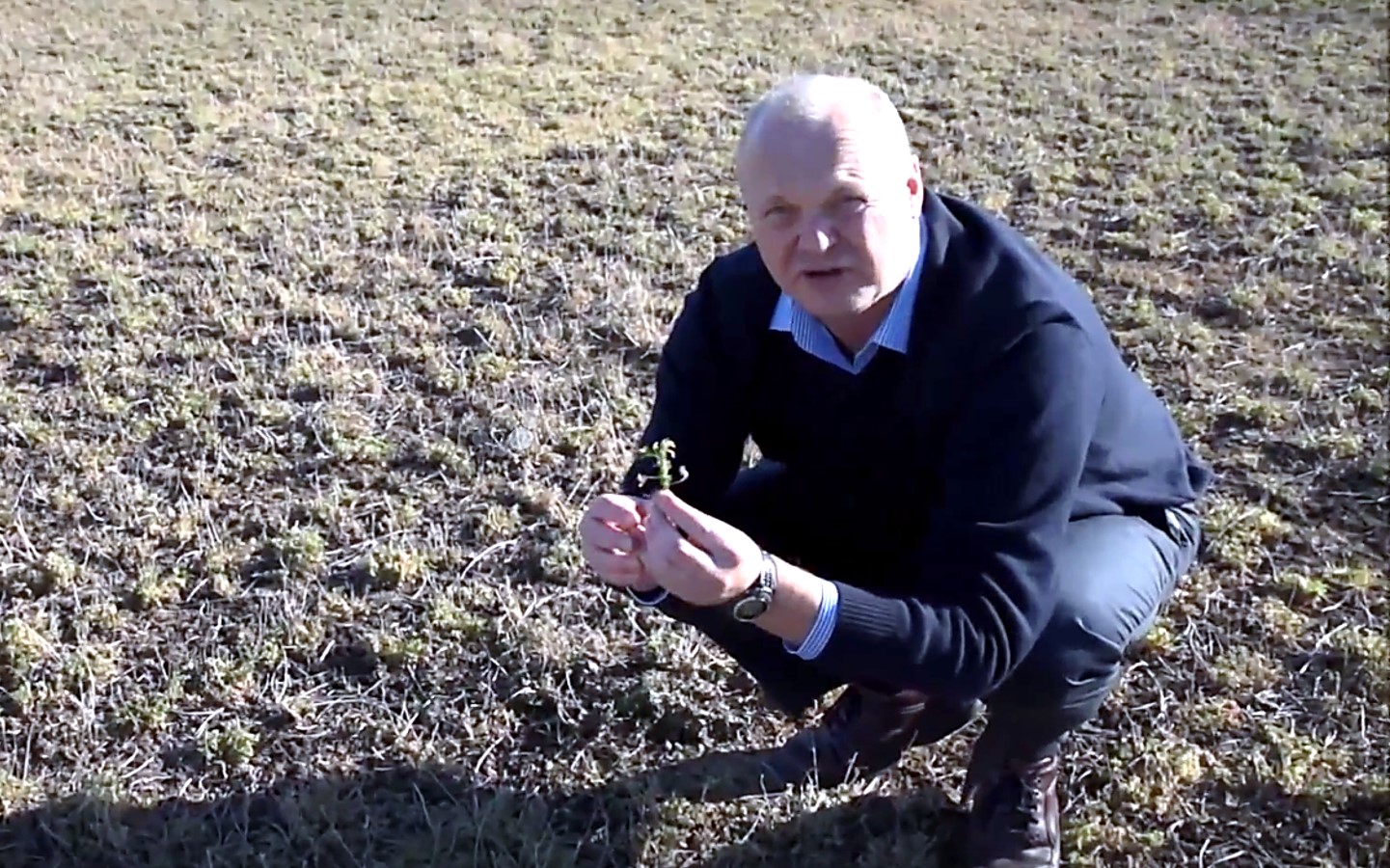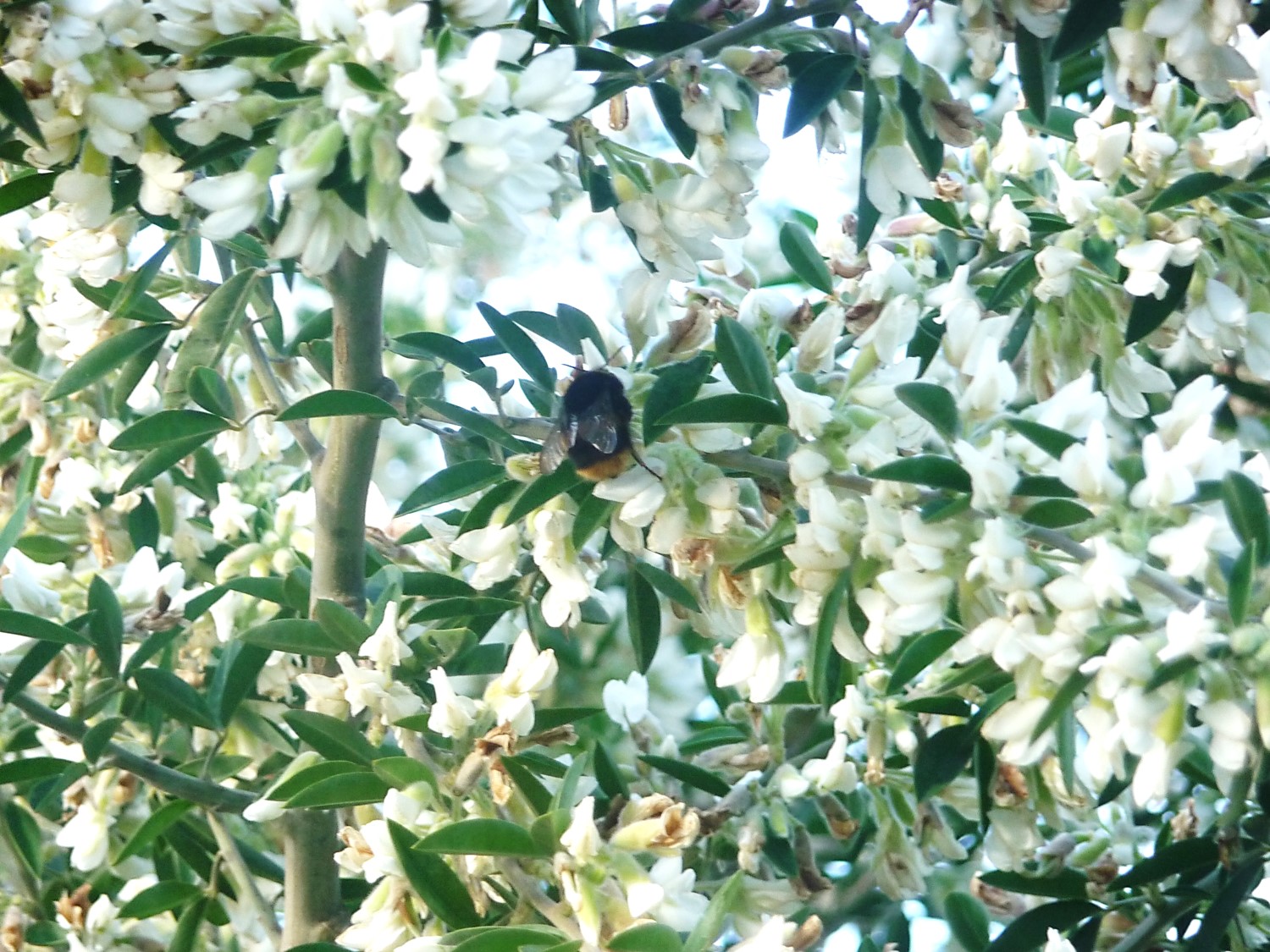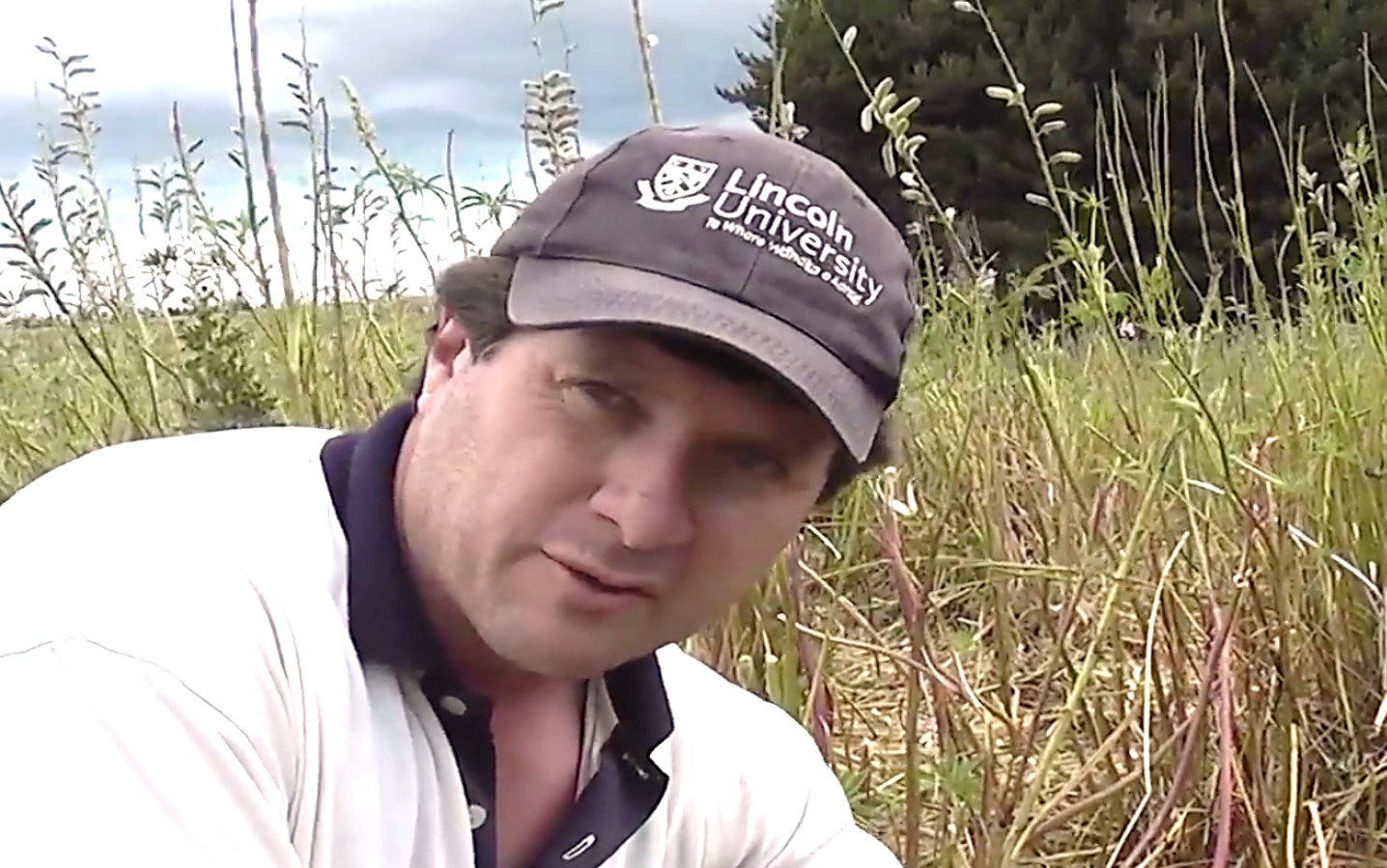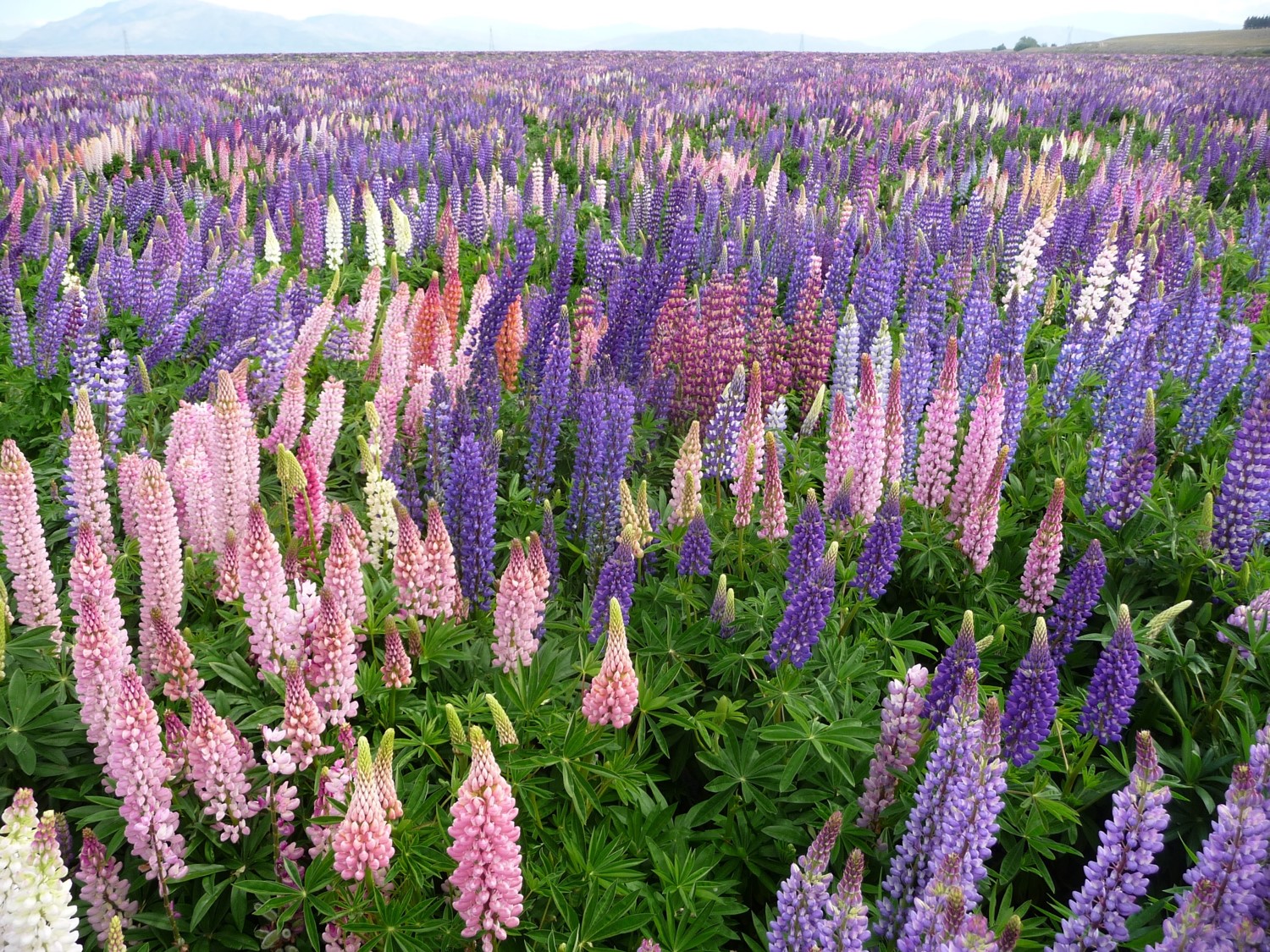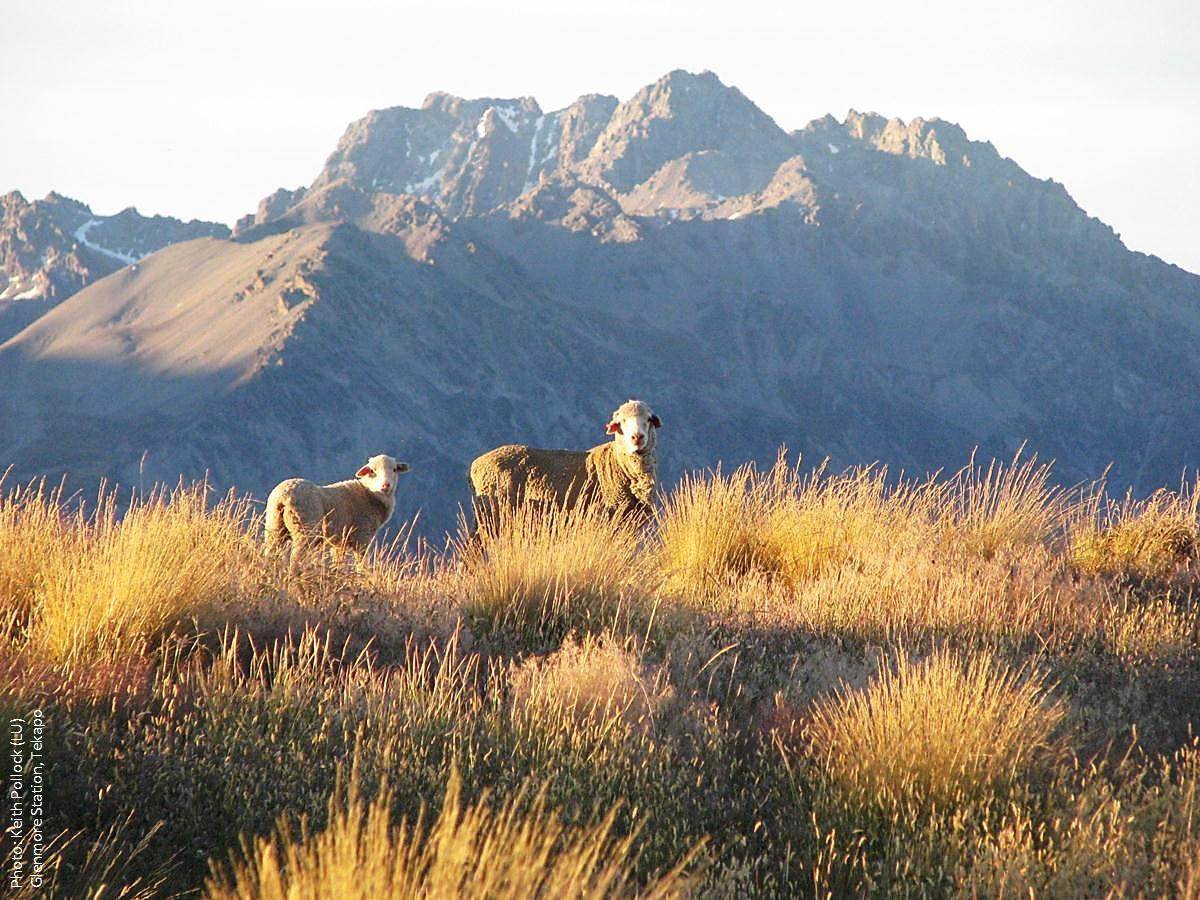Stocking rate and quality of direct grazed lucerne in early spring
In this video, taken on 15 Sept 2015, Prof Moot talks about the stocking rate used on the rotationally grazed lucerne monoculture (6-paddock rotation). The quality (crude protein and ME) of the feed on offer during the early lactation phase at Ashley Dene, Canterbury is discussed.
